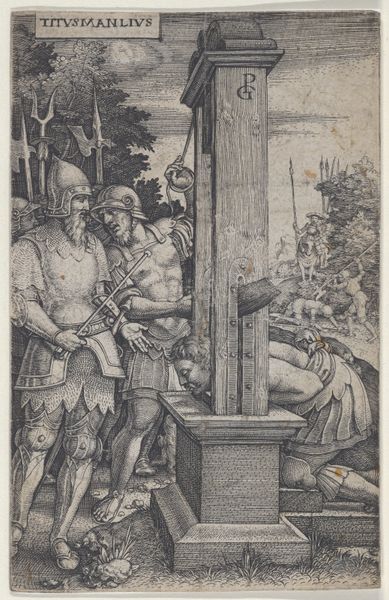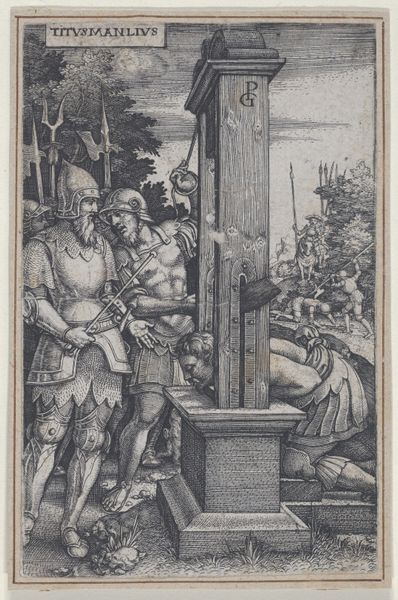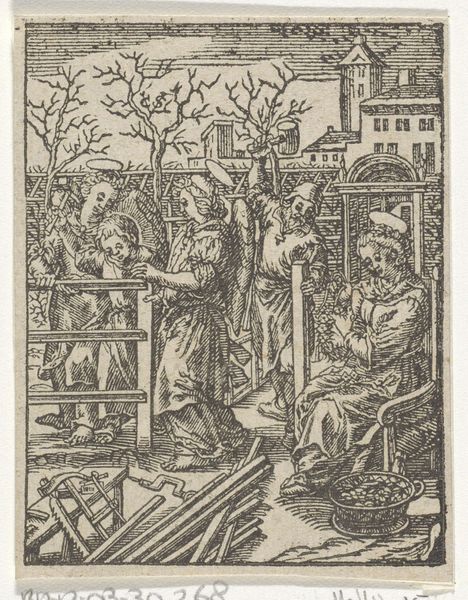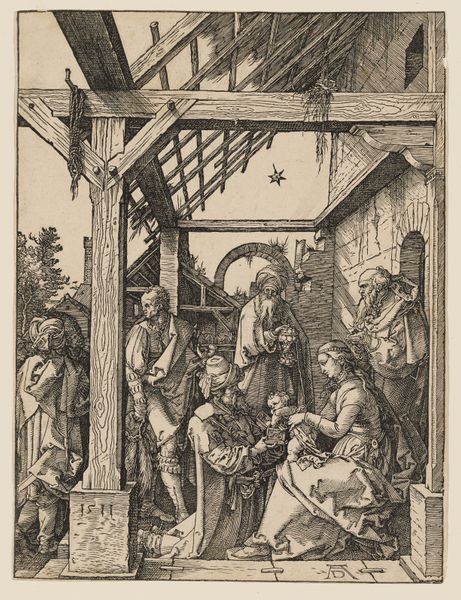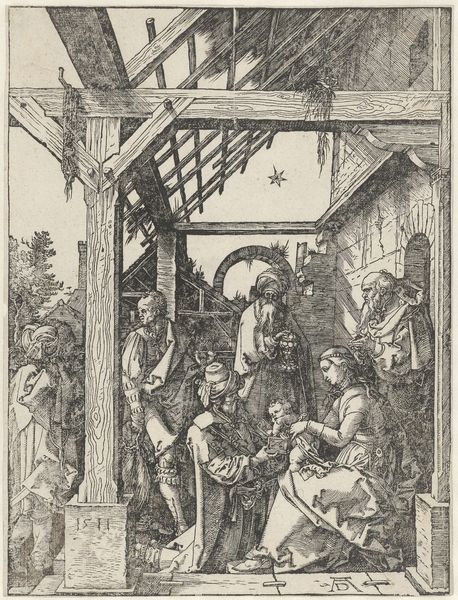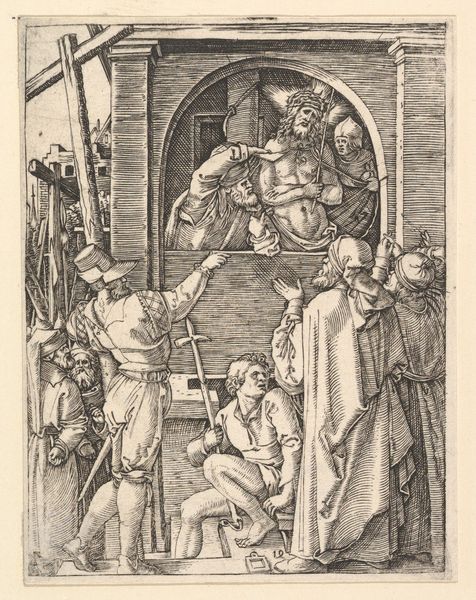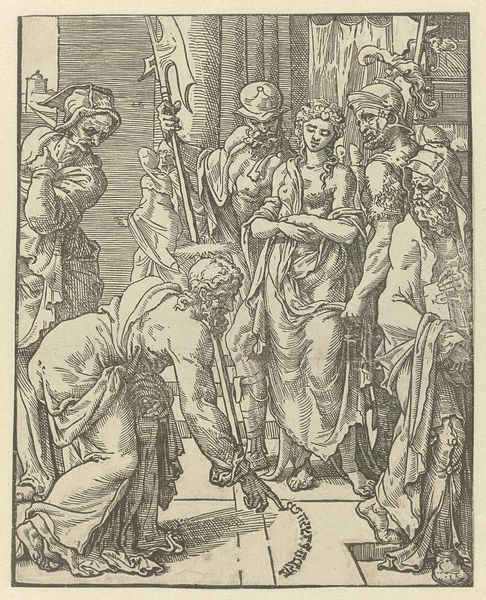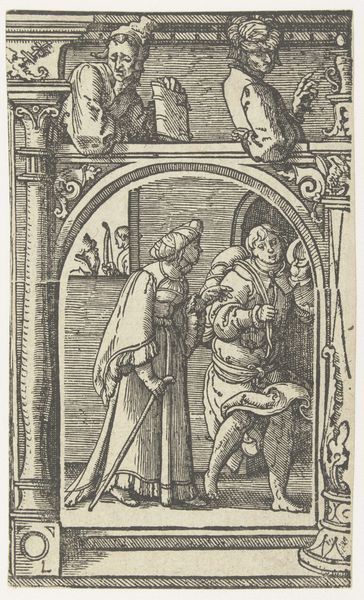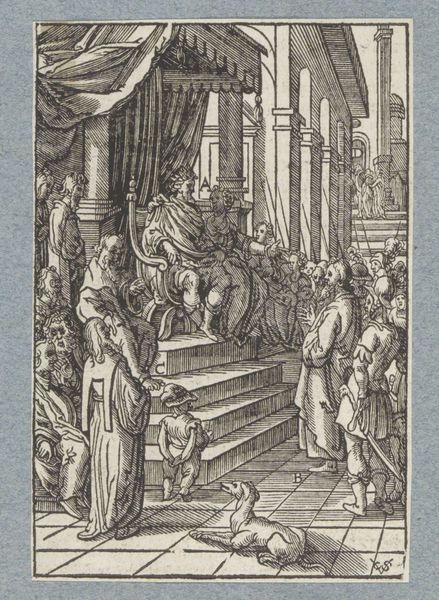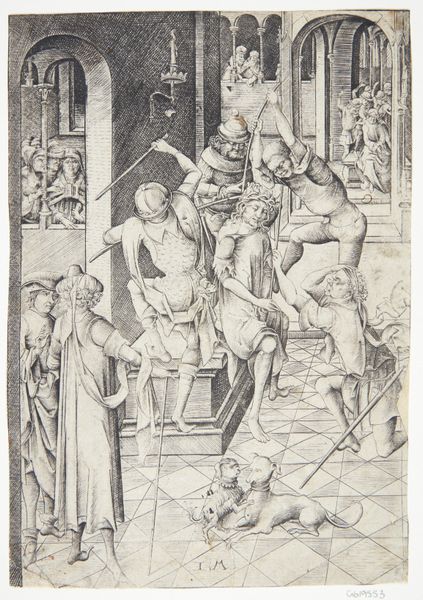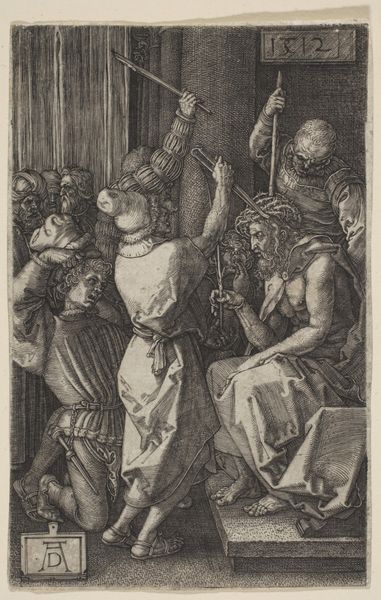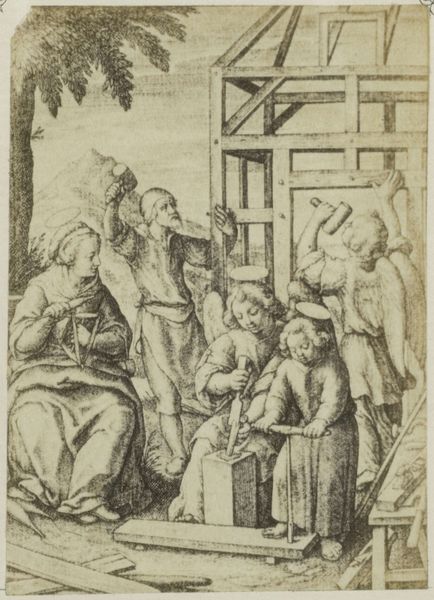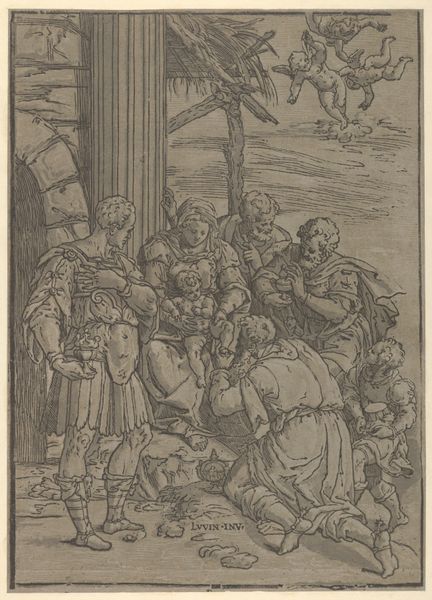
print, engraving
#
narrative-art
# print
#
figuration
#
history-painting
#
northern-renaissance
#
engraving
Dimensions: height 115 mm, width 74 mm
Copyright: Rijks Museum: Open Domain
Georg Pencz created this engraving, "Titus Manlius Torquatus laat zijn zoon onthoofden," which translates to "Titus Manlius Torquatus Has His Son Beheaded," sometime in the first half of the 16th century. Pencz was part of a generation of German artists grappling with the intersection of classical themes and the religious and social upheavals of the Reformation. This piece depicts a Roman father, Titus Manlius, enforcing military discipline by executing his own son for disobedience. The starkness of the execution block, contrasted with the detail of the soldiers’ armor, speaks to the era’s preoccupation with justice, authority, and the individual’s role within a rigid social structure. Pencz uses the print medium, with its ability to disseminate ideas widely, to engage viewers in a dialogue about power, morality, and sacrifice. The emotional weight of this scene is palpable, inviting us to consider the psychological toll on all involved. The decision to depict this grim scene invites reflection on whether it upholds traditional narratives of patriarchal power or hints at the moral ambiguities of absolute authority.
Comments
No comments
Be the first to comment and join the conversation on the ultimate creative platform.
